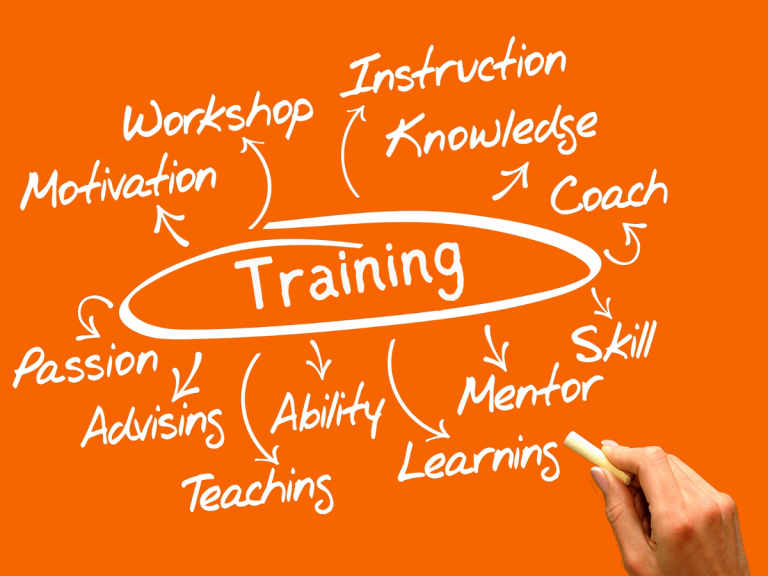Training your employees is an essential part of building a successful business. However, knowing when to train your staff can be the key difference between having a highly capable team and struggling to keep up. Whether onboarding new hires, upskilling your current workforce, or addressing specific skill gaps, understanding the right time for employee training is crucial for achieving maximum effectiveness.
In this guide, we’ll explore the scenarios that indicate the best time to train your staff and offer strategies for ensuring ongoing development.
Identifying the Right Time for Employee Training

Recognizing when to train your staff a critical element of workforce management that directly impacts business performance. Delaying training can lead to skill gaps, inefficiency, and a workforce that isn’t prepared for the demands of their roles. Training your staff at the right time addresses immediate challenges and helps prevent future issues.
Key Indicators for Training:
- Onboarding New Employees: Initial training during onboarding helps new hires adjust quickly, understand company protocols, and become productive faster.
- Skill Gaps Identified: Performance reviews and feedback can reveal areas where additional training is needed to help employees meet expectations.
- New Technology or Processes: Whenever new tools or systems are implemented, employees should receive timely training to ensure smooth transitions.
- During expansions or organizational changes, training is vital for preparing staff to meet new demands.
- Compliance or Industry Standards: In industries with evolving regulations, training is essential to keep employees informed and in compliance.
Why is it Important to Train Your People?

Understanding the importance of training your employee is essential for maintaining a competitive edge and fostering a positive work environment. Well-trained employees are more confident, adaptable, and better equipped to meet business goals. Here are some of the key reasons why employee training should be a priority:
Importance of Effective Employee Training
- Increased Productivity: Well-trained staff can perform their tasks more efficiently, reducing errors and increasing overall productivity.
- Employee Satisfaction: Employees who receive consistent training feel valued and are more likely to be engaged, which reduces turnover and boosts morale.
- Employee Retention: Training demonstrates a commitment to employee growth, which fosters loyalty and reduces the cost of replacing staff.
- Improved Customer Satisfaction: When employees are properly trained, they’re better equipped to meet customer needs, leading to higher satisfaction rates.
- Reduced Supervision: A well-trained team requires less oversight, allowing managers to focus on strategic initiatives rather than micromanaging.
- Lower Wastage: With proper training, employees make fewer mistakes, which can help minimize material and time wastage.
How to Train Your Employees Effectively

Effectively training your employees ensures they are equipped with the skills needed to excel in their roles. Here are the steps for creating a robust and effective training program:
- Assess Training Needs: Identify skill gaps through performance assessments and feedback to ensure the training is relevant to both the employee and business needs.
- Set Clear Objectives: Establish specific, measurable goals for each training session to align with organizational targets.
- Choose the Right Methods: Use a mix of training techniques such as on-the-job training, e-learning, and workshops to cater to different learning styles.
- Engage Employees: Make training interactive and practical, ensuring employees are engaged and able to apply what they’ve learned.
- Evaluate and Adjust: After each training session, measure its effectiveness and make adjustments for future improvements.
- Reinforce Learning: Offer continuous support and opportunities for employees to apply their new skills on the job.
8 Employee Training Tactics That Work
To effectively train employees, it’s important to first consider when to train your staff. The following eight tactics have proven to be effective:
- Set clear expectations for each employee.
- Implement microlearning for quick, digestible lessons.
- Incorporate interactive and engaging materials.
- Use on-the-job training and mentorship.
- Provide regular feedback and assessments.
- Offer flexible online training modules.
- Encourage continuous learning and skill development.
- Use real-world scenarios and role-playing exercises to enhance learning.
How to Make Your Training More Effective
To make your training programs more effective, ensure the timing of the training is optimal. Tailoring the content to employees’ specific roles, engaging them with hands-on experiences, and using relevant case studies will increase retention and application of new skills. Additionally, aligning training with immediate business needs ensures the training is timely and impactful.
Prioritizing Ongoing Training and Development

Prioritizing ongoing employee training and development ensures that your staff remains agile and capable of adapting to the changing demands of the industry. Continuous training not only enhances employees’ current capabilities but also prepares them for future roles and responsibilities.
Decide and Find the Right Type of Training for Your Business
Determining when to train your employee and choosing the right type of training depends on your business goals and employee needs. Start by assessing the specific skills your team lacks and then selecting the most suitable training methods. Training options includes:
- On-the-Job Training: A hands-on approach that allows employees to learn while performing their roles.
- Workshops and Seminars: Structured sessions led by experts to address specific skills.
- E-Learning: Online modules offer flexibility for remote teams and allow employees to learn at their own pace.
- Mentoring and Coaching: One-on-one coaching helps develop leadership and specialized skills.
- Cross-Training: Teaching employees to perform tasks outside their usual roles, improving team flexibility.
Choose the Right Training to Suit Your Employees

Choosing the right training for your employees, along with determining when to train your staff, is essential for maximizing their potential and ensuring your organization’s success. Different industries have unique requirements, and tailoring employee training to these needs will help you train staff effectively and align their skills with your business goals.
At JDRC (Jobs Dynamics Resource Center), we offer a wide range of training solutions tailored to meet the specific needs of various industries. Whether you’re in the “corporate sector, IT, retail, hospitality, or any other field”, we provide training that fits your business. Our programs are designed to ensure you train employees effectively, driving productivity and long-term success.
Here’s a look at some industry-specific training areas we specialize in:
- Corporate Sector: Leadership development, compliance, and strategic planning.
- IT Companies: Technical skills, cybersecurity, and innovation.
- Retail: Sales techniques and customer relationship management.
- Hospitality: Customer service and cultural awareness.
- Startups: Innovation, business development, and agile methodologies.
To explore our customized training solutions, contact JDRC and discover how we can help you train your staff for success.
Types of Training
Selecting the right types of training, as well as knowing when to train your staff, helps ensure your employees gain the necessary skills and knowledge for their roles. The main types of training include:
- On-the-Job Training: Hands-on experience that’s perfect for new hires.
- Workshops/Seminars: Ideal for tackling specific challenges.
- E-Learning: Great for remote or large teams who need flexible learning options.
- Mentoring: Personalized training for leadership development.
- Compliance Training: Ensures adherence to industry standards and regulations.
- Soft Skills Training: Focuses on improving interpersonal skills, such as communication and teamwork.
More on When Train Your Staff (FAQs):
You should train your staff regularly, at least annually, or whenever there are new tools, processes, or regulations.
When to train your employee depends on business needs. Key times include during onboarding, when new technology is introduced, or when performance reviews indicate a need for skill development.
Training should be conducted during onboarding, before introducing new systems, or when addressing performance gaps.
You should train staff to enhance their skills, improve productivity, and ensure they meet the evolving demands of their roles.
You can train your staff through on-the-job learning, workshops, online modules, and mentorship programs.
Planning involves assessing needs, setting goals, and choosing appropriate methods for employee training.
Conclusion:
Understanding when to train your staff and how to tailor your training programs to meet both employee and business needs is crucial for long-term success. Regular, targeted training not only improves productivity but also enhances employee satisfaction and retention. Start assessing your team’s training needs today to keep your workforce skilled and ready for future challenges.
Looking for more insights on workforce development and job market trends? Jobs Dynamics offers valuable resources and information to help you stay ahead. Check out our latest blog posts on topics like High Demand Skills in the Nepal Job Market for 2024 and training best practices. Explore Jobs Dynamics for a complete range of services, from job listings to employee training tips.
Get started today with a tailored training program from JDRC, ensuring your team is equipped with the skills they need to excel in a dynamic work environment by knowing exactly when to train your staff.

